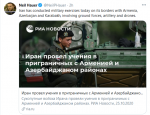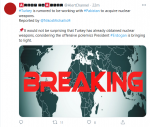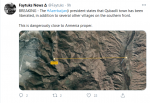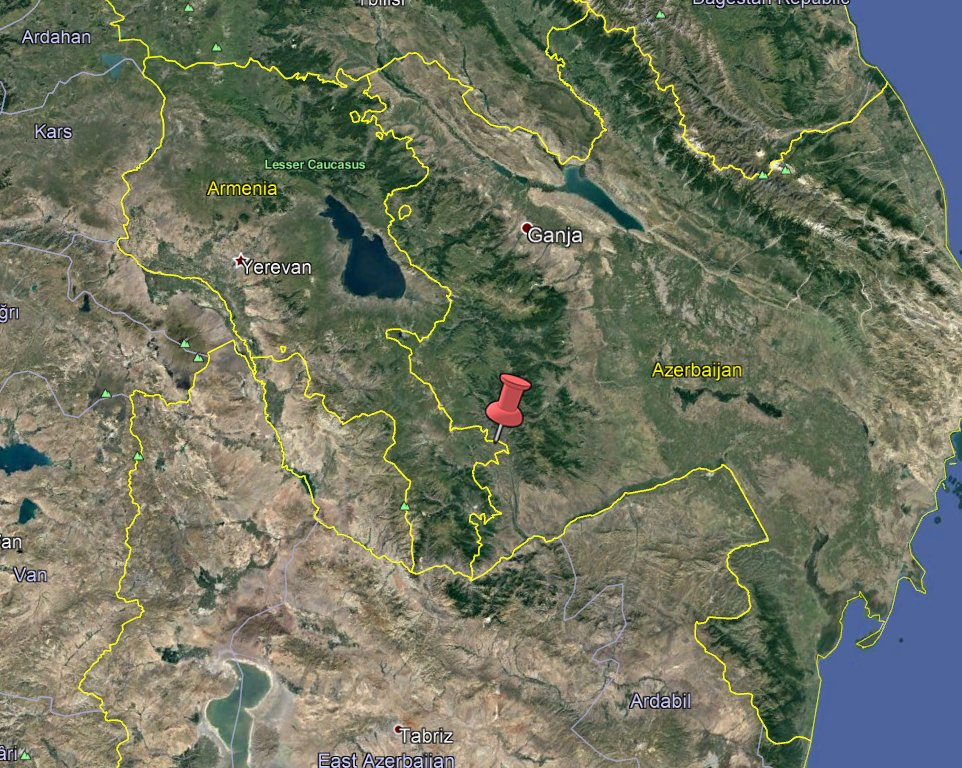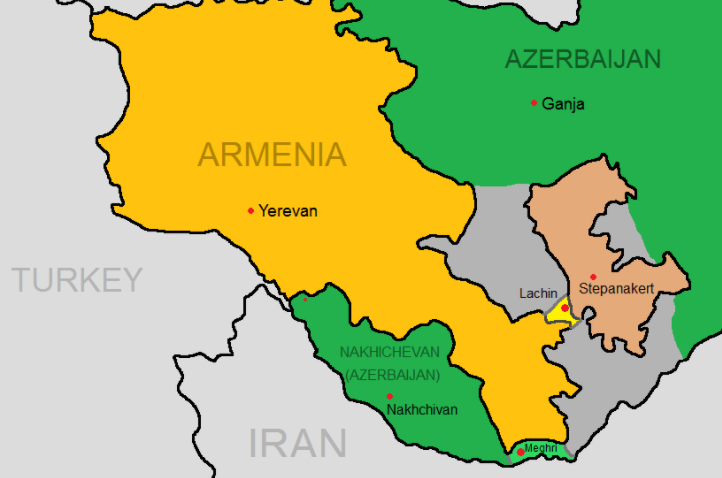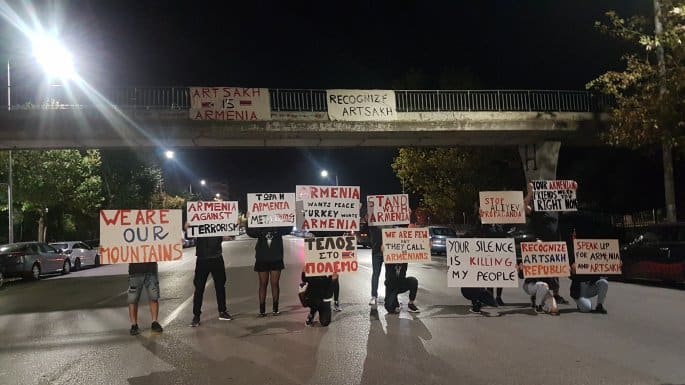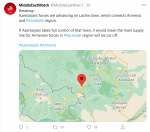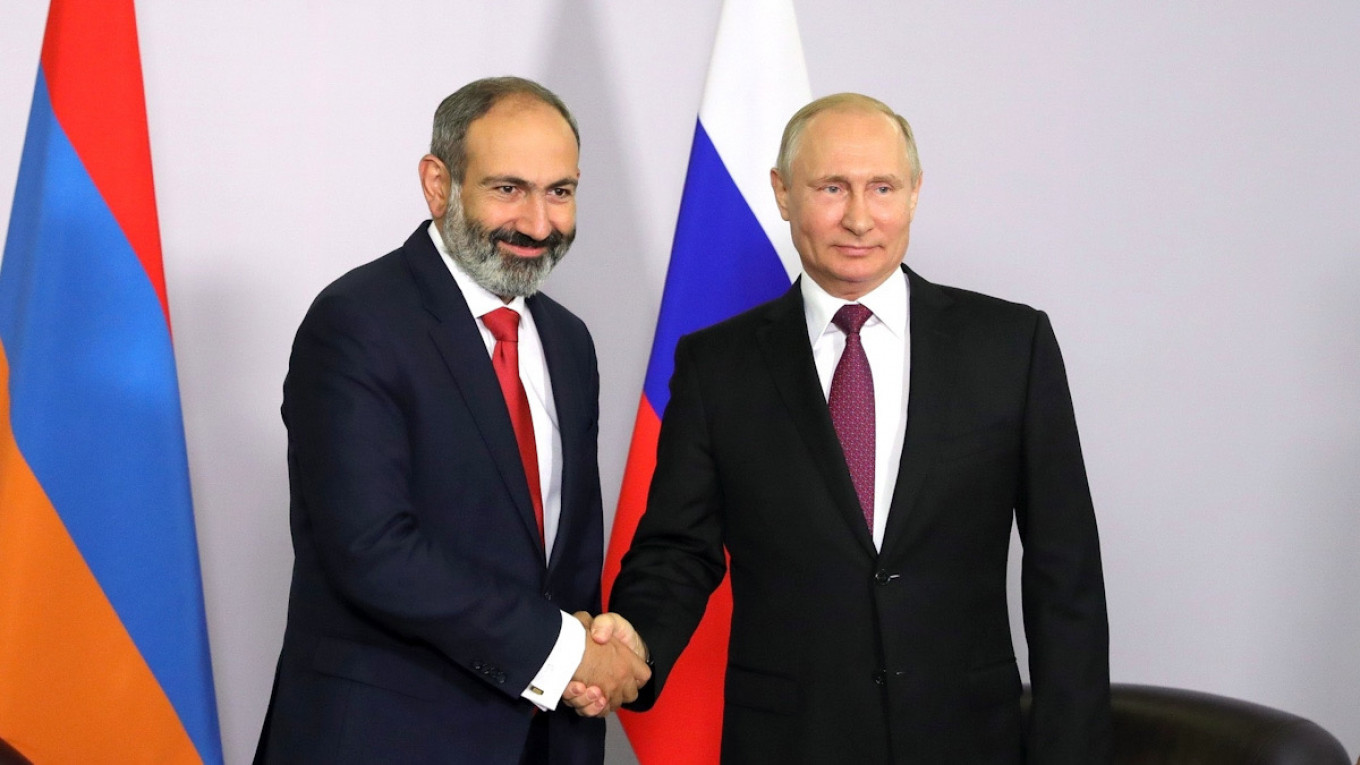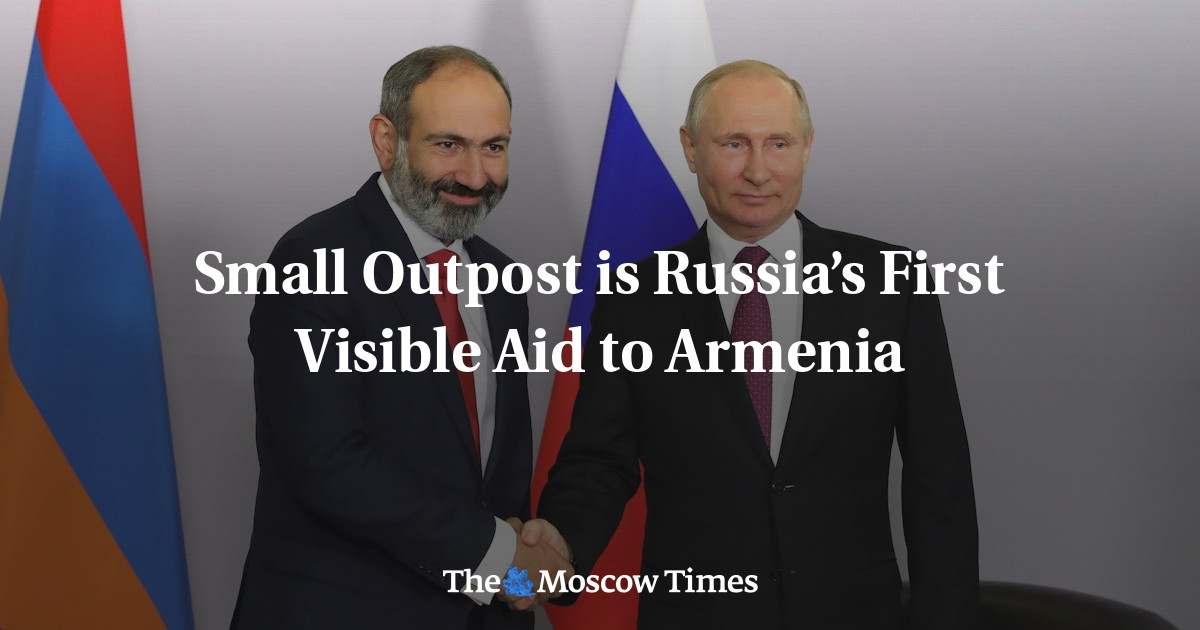The electronic warfare system is known as “Belladonna”, a poisonous plant that gets its name from Renaissance women who used its extract for tinctures to dilate the pupils of their eyes…

asiatimes.com
Russia knocking Turkish drones from Armenian skies
Moscow has unleashed its 'Belladonna' drone killer system in Armenia to counter Azerbaijan's use of Turkish-made Bayraktar armed drones
By
STEPHEN BRYENOCTOBER 26, 2020
A Krasukha electronic warfare system at Nikolo-Aleksandrovsky training range in Stavropol Territory. Photo: AFP/Denis Abramov/Sputnik
The electronic warfare system is known as “Belladonna”, a poisonous plant that gets its name from Renaissance women who used its extract for tinctures to dilate the pupils of their eyes, ostensibly to make them more attractive.
While Belladonna translates to “beautiful woman” in English, in Russian it has a second meaning: it is the name of a
Russian electronic jamming system now credited with knocking out at least nine Turkish
Bayraktar armed drones used by Azerbaijan to target Armenia.
If true – and no one has denied it – the system is now operating around the sensitive Russian military base at Gyumri in Armenia, far from the Nagorno-Karabakh conflict area.
In Russian, Belladonna is known as “Krasukha.” The Krasukha jamming system was rushed to Armenia to counter the successful use of both armed drones such as the Bayraktar and suicide drones like the Israel-made loitering munition known as
Harop.
The Turks have heavily advertised the success of Bayraktar in three theaters – Syria, Libya and now in the Nagorno-Karabakh conflict. Turkey and Azerbaijan have released numerous
“kill videos” of the drone blowing up tanks, armored vehicles and trucks – and killing many soldiers in the process.
Bayraktar is a fairly conventional armed drone that is navigated to the target area using GPS. The drone’s
Wescam MX-15D multispectral camera system is made in Canada while its
BRP-Rotax engine that generates about 100 horse-power is produced in Austria.
Canada has halted the sale of the Wescam camera system to Turkey because of its use on Bayraktar drones in the
Nagorno-Karabakh conflict. But Canada has been silent about Rotax engine exports, although the Austrian company is owned by Canada’s
Bombardier Recreational Products.
No doubt there are other Bayraktar parts that are made in Europe, the United States and elsewhere.
An official walks among objects which Armenia presented as captured and downed Azeri drones during recent armed clashes on the Armenian-Azerbaijani border, in Yerevan, July 21, 2020. Photo: AFP/Karen Minasyan
The
Krasukha is a broadband multifunctional jamming station manufactured by
KRET (“Concern Radio Electronic Technologies”), part of the
Rostec Group. Since 2014, the company has been
under US sanctions for its activities in Ukraine and in Crimea.
KRET consists of more than 70 member companies in electronics spread out across Russia while KRET itself acts as a manufacturing group holding company with about 50,000 employees
Krakushka was designed primarily to protect areas in and around Russia’s military bases where its powerful transmitter can blank out airborne radars. The Russians, however, have also found Krakuska useful in counteracting armed drones.
Krakushka was used successfully in defending the
Hmeymim Air Base in Syria that was attacked by armed, if not primitive, swarming drones. An earlier strike by such drones had
caused significant damage at the base, destroying some aircraft, and
alarmed Russia’s military about a significant vulnerability at Hmeymim.
So much so, in fact, that Russia’s defense ministry brought back some of the drones that crashed and complained bitterly about the spread of drone technology in the Middle East.
The Russians might also have complained about China, which supplied the engines, the cameras and the GPS receivers and radios in the drones that were home-built by ISIS and others. But, of course, they did not want to stir trouble with their Beijing ally. For the record, the Russians said the swarming drones caused no damage.
The Russian press claims that at least nine Bayraktar drones were shot down on or about October 19. Some photos of the drones that crashed have been released by Armenia and have appeared in the Russian press, principally at Avia.pro.
The photos show smashed up Bayraktar drones, but no sign they were hit by ground fire. According to the press reports, the Krakushka jamming system caused the crashes.
The version of Krakushka being used in Armenia is the latest model Krakushka-4. The system is truck-mounted, but is used primarily to defend Russian bases. So far as is known, it is not being used by Armenian forces, nor is it being deployed in the Nagorno-Karabakh area.
Krakushka jams communications in the same way it blanks out radars; it does not, however, control the jammed drones. It would appear that the Bayraktar drone does not have a “return to home” capability if it loses contact with its base station and if GPS signals are jammed. Most drones with the capability to return to their home systems rely on GPS to do so.
The Russians have made clear that the Turkish drones were shot down in the airspace around the Gyumri military base, which in Armenia is near the Turkish border and about 487 kilometers from the nearest major Azerbaijani base at Ganja.
The reported communications range of the Turkish drones is 150 kilometers, so the Azerbaijanis and the Turks would have had to move their launch point elsewhere to be within operational range unless the communications range is greater than reported.
But the more profound question is why would the Azerbaijanis and the Turks fly armed drones near Russian bases, risking Russia’s entrance into the conflict. Gyumri serves as home to the
102nd Russian military base controlled by Russia’s Southern Military District.
Were the drones sent on a one-way mission to fly over the area to put the Russians on notice? It is interesting that in the photos of the crashed drones there is no sign of any air-to-ground missiles such as the MAM-L smart micro munition built by Turkey’s Rokestan.
Neither Azerbaijan nor Turkey has made any statement about having nine of their drones knocked out in or around Gyumri. The Russian government likewise has not made an official statement on the downed drones.




